This is not only the most ambitious initiative among Thailand's tourism development plans, but also opens up a "golden" opportunity for Vietnamese tourism to break through.

According to Bloomberg, in recent months, Thai Prime Minister Srettha Thavisin has promoted the initiative to develop enhanced visas with Southeast Asian countries such as Cambodia, Laos, Malaysia, Myanmar and Vietnam, aiming for a common visa in the region similar to the European Union's (EU) Schengen visa. This facility will ensure seamless travel for tourists between the six neighboring countries, creating a lever for tourism development in the region.
The single-entry visa is the most ambitious initiative among Thailand’s tourism development plans and is aimed at a long-term goal. Notably, Thailand wants to take advantage of this common visa policy to negotiate with EU countries, moving towards reaching a visa exemption agreement between Schengen and this group of ASEAN countries.
If we look at the position and number of visitors that the land of golden temples currently owns, perhaps visas are not an urgent issue that this country needs to continue to promote to increase tourism. Because according to official data, Thailand, Cambodia, Laos, Malaysia, Myanmar and Vietnam recorded a total of 70 million international tourists in 2023, of which Thailand and Malaysia accounted for more than half in both quantity and revenue. As of March this year, Thailand welcomed more than 80% of international visitors entering without having to apply for a visa.
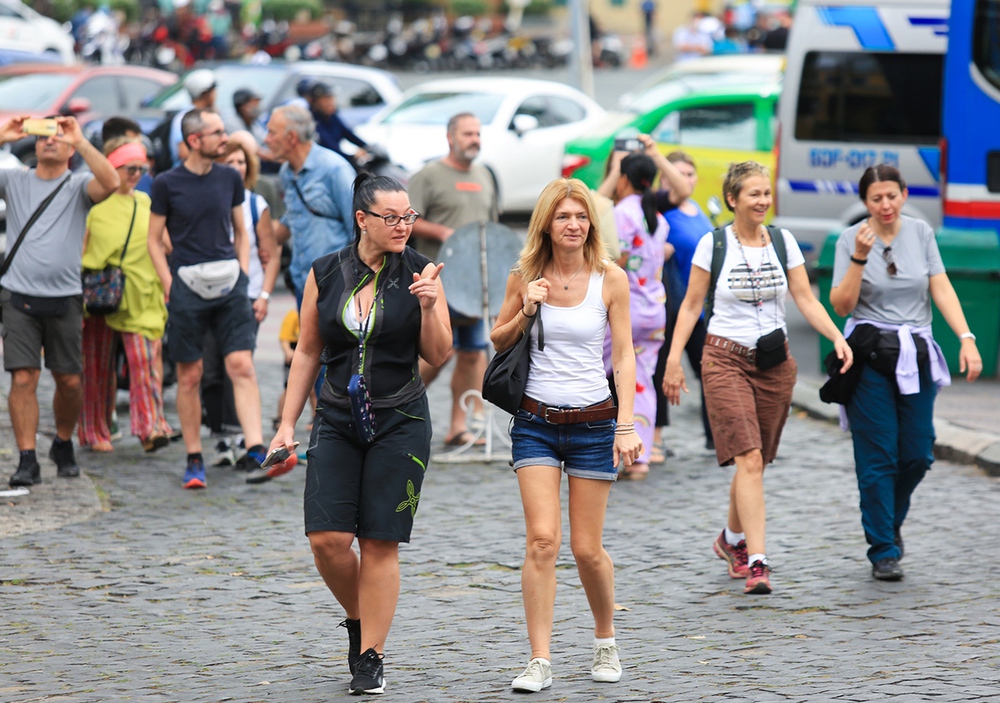
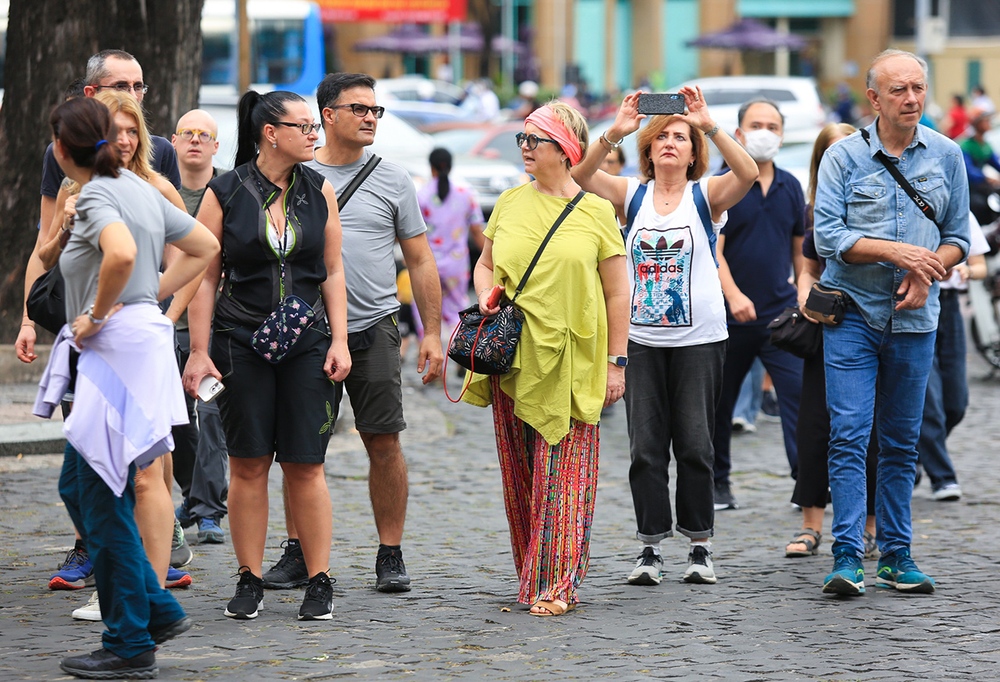
Foreign tourists visiting Ho Chi Minh City (central area of District 1)
Nhat Thinh
With such strong openness and a fairly solid position as the "big brother" of the Southeast Asian tourism industry, why does Thailand still want to form an "Asian-style Schengen visa"?
Mr. Nguyen Quy Phuong, Head of Tourism Promotion Management Department, Vietnam National Administration of Tourism, explained: It is true that currently, when talking about international tourism and welcoming international visitors to the markets, Thailand is a destination that is mentioned a lot. However, through the process of cooperation with the General Department of Tourism and Thai enterprises, Mr. Phuong realized that they really want to change the image of the destination, through expanding connections, especially with Vietnam and other countries in the region. Specifically, up to now, Thailand's biggest advantage is the formation of cheap tours, attracting a large number of visitors. Currently, they determine that the effectiveness of tourism is reflected in revenue, number of visitors and the number of returning visitors. Therefore, the Thai tourism industry wants to cooperate to innovate flight routes and tourism products, so that visitors to Thailand will continue to neighboring countries such as Vietnam, Cambodia, etc.
"Thai people are very interested in Vietnam because we have high-end tourism products. If Vietnamese people think of a place to go, the first choice will be Thailand, but they often position Thailand as a cheap destination. Therefore, the Thai tourism industry also wants to have more high-end products and we have this advantage," Mr. Nguyen Quy Phuong pointed out.
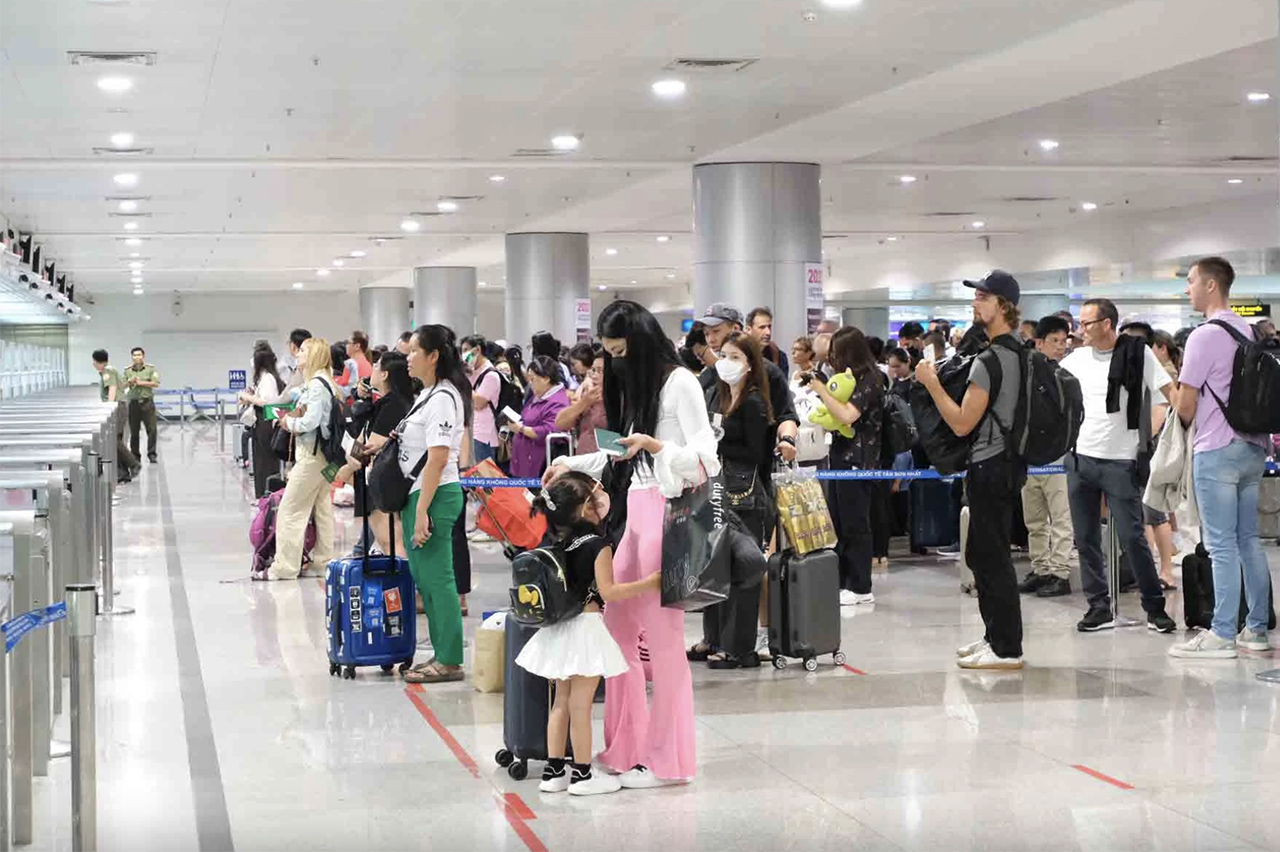
Foreign tourists entering Ho Chi Minh City
Mr. Vo Viet Hoa, Director of International Tourism, Saigontourist Travel Service Company, also acknowledged that if put on the scale, Vietnam would probably benefit more than Thailand when the idea of a 6-country visa becomes a reality.
Mr. Hoa analyzed: Long-distance international visitors from the US, Europe... before connecting flights to Vietnam mostly went through the gateway from Thailand and Malaysia. Thailand has a larger flight network to Europe, the US and other countries than Vietnam. Currently, Thailand and Malaysia have opened visas very widely, only Vietnam is still quite strict. Americans who come to Vietnam and want to go to Thailand, Malaysia to play are easy, even transit and conveniently enter and stay for tourism. As for American visitors who come to Thailand, Malaysia and want to go to Vietnam, Laos, they have to apply for a visa, which is much more difficult. Now if the visa policy is interconnected and opened up, the number of visitors from a long distance to Thailand, Malaysia and then to Vietnam will certainly increase dramatically compared to the opposite direction. Not to mention, because of that reality, airlines around the world currently determine to sell long-distance flights from Europe, the US, Australia... to Thailand as the main route, so the price is quite high, while the connecting route from Thailand - Vietnam is often very cheap. If there are more visa advantages, it will be much more beneficial for visitors to Vietnam. Vietnam will attract a large number of visitors from Europe and the US.

Thailand wants to join neighboring countries in exempting visas for EU visitors, only need 1 visa for free travel
Nhat Thinh
"We just participated in the International Cruise Fair (SEATRADE). American partners are very interested in cruise tours to Vietnam, but the biggest obstacle that makes them hesitate to open cruise routes is visas. Each cruise ship carries thousands of passengers, and visa procedures are the most "scariest". American and European tourists often travel for long periods of time, 2-3 weeks, even months. They have taken the trouble to fly far, so they often want to experience many countries, travel on multiple routes. However, when a ship docks in Vietnam, they have to apply for a visa, when they arrive in Myanmar, they have to apply for another visa, and then to Laos... it's both difficult and costly. Meanwhile, last year Saigontourist welcomed 2-3 ships bringing nearly ten thousand German tourists to Vietnam, simply because they did not need a visa. That said, visa procedures are an extremely important key. If this key is unlocked, the number of Western tourists coming to Vietnam will increase significantly, both by air and by sea," Mr. Vo Viet Hoa acknowledged.

New survey data from Outbox Consulting shows that the market and travel habits of tourists around the world have changed a lot after the pandemic.
Tourists will prioritize short-haul flights (1-2 hours, no more than 8 hours) to destinations within the region. For example, 40% of international visitors to Southeast Asia in 2023 will be from the Asia-Pacific market (excluding China); more than 50% of tourists to the European market will come from countries in this continent. For Vietnam alone, the intra-bloc market currently accounts for 81% of total international visitors. In the coming time, visitors from the Asian market will dominate. It is forecasted that by 2027, Asia will be the market with the largest scale and spending level in the world, especially in the context of the boom of the Indian market and the return of Chinese visitors. Not to mention, the growth of the new middle class in Asia is very strong.

Tourists - Westerners at Bui Vien walking street - Western street
Nhat Thinh
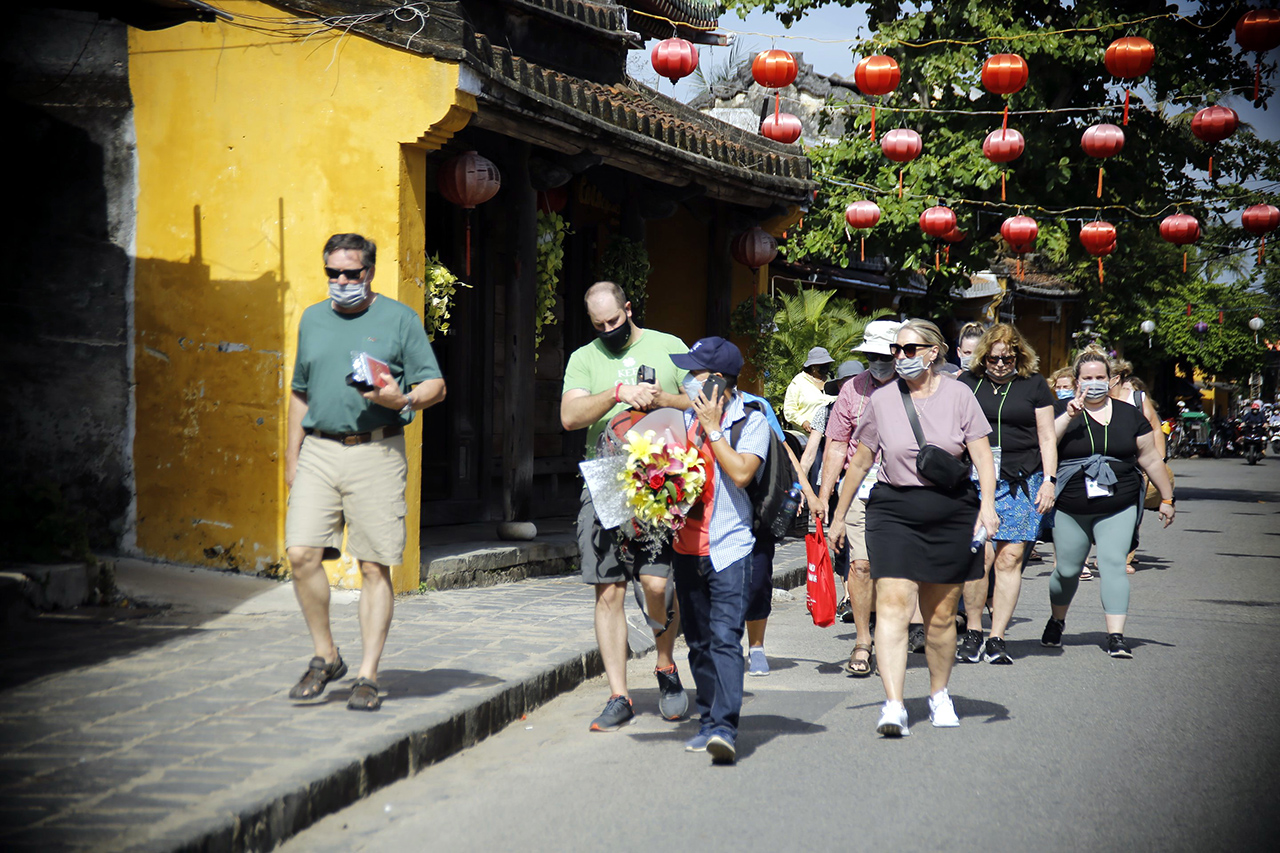
Tourism - foreign tourists visit Hoi An ancient town
Manh Cuong
In fact, despite having made great strides in position, in the Asia-Pacific region, Vietnam is still not the first choice of domestic tourists. Some travel companies recognize that many markets that previously favored Vietnam have now begun to change direction, especially China. After a long period of being restricted, they no longer prefer to go to one destination but have switched to traveling by route. For example, they fly to Da Nang and from there they will fly to Ho Chi Minh City to continue to Siem Reap (Cambodia); or from Hanoi they will fly to Ho Chi Minh City to Siem Reap. However, to enter Vietnam, they have to apply for a visa, to enter Cambodia they have to apply for a visa again, so Chinese tourists are not very interested. Meanwhile, Thailand has just "opened up" its visa policy to welcome this huge flow of tourists. If the 6-country visa policy can be implemented, travel companies linking cross-border tours will be very simple, without hesitation or thinking.
Linking to break through the potential of road border tourism is also an issue that Mr. Cao Tri Dung, Chairman of the Da Nang Tourism Association, has been concerned about for many years. Recalling the formation of the East-West economic corridor, especially the opening of the Friendship Bridge 2 (December 19, 2006) connecting Mukdahan (Thailand) with Savannakhet (Laos), which created conditions for localities on the route from Savannakhet to Da Nang to have strong growth in tourists, Mr. Dung still cannot help but feel regretful. The reason is that Vietnam is located on the Trans-Asia route, on the East-West route, all of which are vital routes, so the potential for road tourism is very large. After activating the East-West market, Vietnam proposed the "5 countries, 1 visa" plan for Laos, Cambodia, Thailand, Myanmar and Vietnam, meaning that visitors can use only one visa to travel to all 5 countries mentioned above. Until now, many experts in the industry have persistently proposed to continue pursuing the idea of "one visa - many destinations" in the CLMV sub-region (Cambodia - Laos - Myanmar - Vietnam) in which our country plays an important role, but the tourism industry is rarely mentioned. On the contrary, as soon as the idea was proposed by Vietnam, Laos, Cambodia and Thailand immediately officially cooperated to exchange tourists with each other through the form of "2 countries, 1 destination", allowing visitors with a visa to enter Thailand to enter Laos/Cambodia and vice versa. Previously, many visitors traveled in groups, and travel agencies were the focal point to take care of "from A to Z", but now the trend of traveling alone, traveling in small groups of family and friends is increasing. If there is no one to "take care" of all the procedural issues and inconveniences, they will switch to other types of tourism.

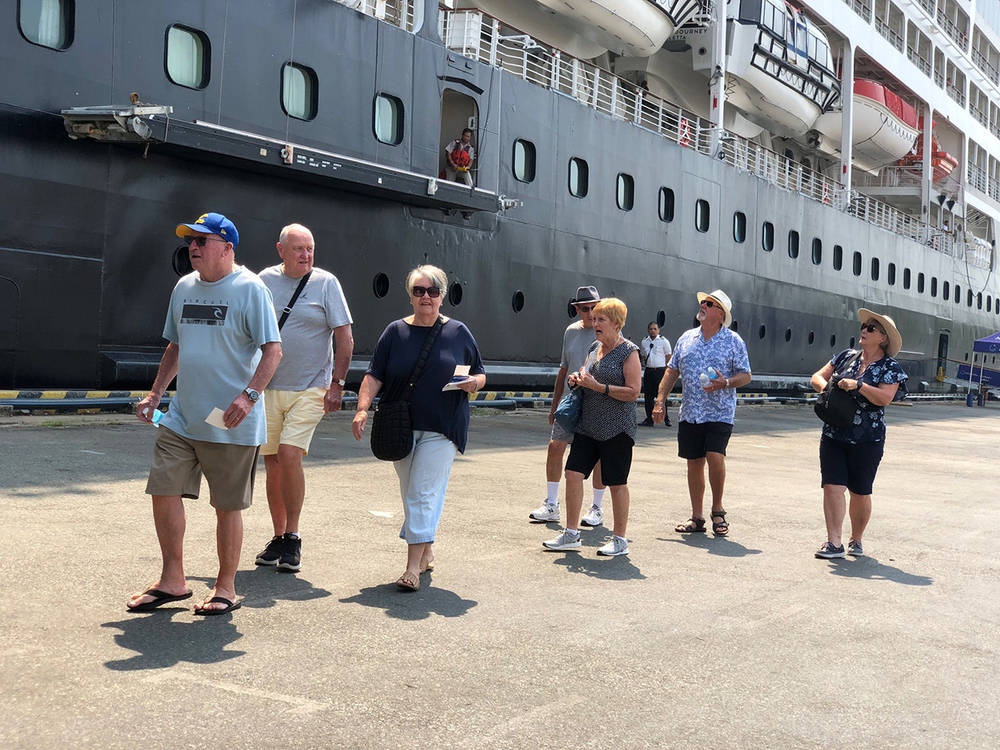
Most cruise ship passengers coming to Vietnam in 2023 will be Germans, thanks to not having to apply for a visa.
Chi Chi
Therefore, the southern border gate between Thailand and Malaysia is very busy with visitors. The same goes for the land border gate between Thailand and Laos. Looking further, tourists to Europe can comfortably travel by road between countries, the border gate does not even have a barrier. While Vietnam only has a bustling border gate system with China, most of the border gates with Laos and Cambodia are not too bustling.
If we can really make an "Asian-style Schengen visa" like Thailand's initiative, it will be a huge boost for land border tourism in particular, as well as Vietnam's tourism position in general. Tourists can easily visit 6 countries by land, instead of expensive air travel. This also helps tourists have more diverse experiences on their trips, increasing the competitiveness of 6 ASEAN countries with large markets such as China, India, Korea and Japan.
"We have the opportunity to demonstrate our attractiveness as a destination in the overall group of countries, and to integrate deeply into world tourism. In the past, Vietnam has had initial success in raising the level of its destinations. Now, if we can continue to diversify our markets, penetrate deeply into the group of leading tourism countries, and match the trend of inter-regional tourism demand, we can completely reach the position of an intra-bloc tourism hub," Mr. Cao Tri Dung expected.

According to Professor Thitinan Pongsudhirak, Faculty of Political Science, Chulalongkorn University (Thailand), for a common visa program, approval must be coordinated between countries, but Southeast Asian countries currently do not have common entry criteria, unlike the EU. The initiative to establish an EU-like Schengen area in Southeast Asia has been considered for many years. ASEAN announced plans to build a single visa travel mechanism in 2011, but the effort has stalled due to significant differences in visa regulations among member states.
Mr. Vo Viet Hoa also determined that waiting for all 6 countries to negotiate and reach an agreement on a common visa will certainly take a lot of time and be challenging. Therefore, Vietnam, with the trend of promoting a more open visa policy, should take action steps first. "For example, Vietnam can "join hands" with Thailand to form a bilateral visa first. Thailand has exempted visas for whichever countries and territories, Vietnam also opens visas to those countries and territories. To learn, the way Thailand has introduced "excellent" policies to develop tourism is the most worth learning for Vietnam. Their security and technical issues are also very good. This is what businesses and the entire tourism industry of Vietnam have been waiting for for a long time. We expect the Government to take steps to promote as soon as possible so as not to miss the opportunity to attract a large flow of visitors from the leading tourism market in the region", the representative of Saigontourist Travel proposed.

Western tourists enjoy the experience of planting rice at the Cam Chau 2024 Rice Field Festival (Hoi An City, Quang Nam)
Manh Cuong
Agreeing, Mr. Cao Tri Dung also said that Vietnam should proactively demonstrate its role in this cooperative alliance. However, it is necessary to determine that cooperation always goes hand in hand with competition. The alliance of 6 countries with a common visa will help the market share of the entire ASEAN bloc become larger, but at the same time, it will increase competition for each piece of the cake. Vietnam wants to take a part of the guests from Thailand, they also want to share a part of the guests of Vietnam. In this "handshake", any country with products and destinations that are not attractive enough will have more visitors. Therefore, in parallel with the early negotiation process, the tourism industry also needs to review each destination, prepare a set of products that are attractive and of sufficient quality so that visitors to Vietnam will stay longer and spend more.
"They open up opportunities for us to expand our customer base, but whether we can seize the opportunity or not, or make the most of it, depends only on our own capabilities. If European, American, and distant market visitors increase, what do we have to serve them, to force them to stay longer to explore, to come back many times; if more Chinese, Korean, and Indian visitors come, how do we exploit them, how do we manage them, how do we make them not only come in large numbers but also spend more money, use many multi-level services...? All of these issues need to be raised right now and seriously answered," Mr. Cao Tri Dung emphasized./.
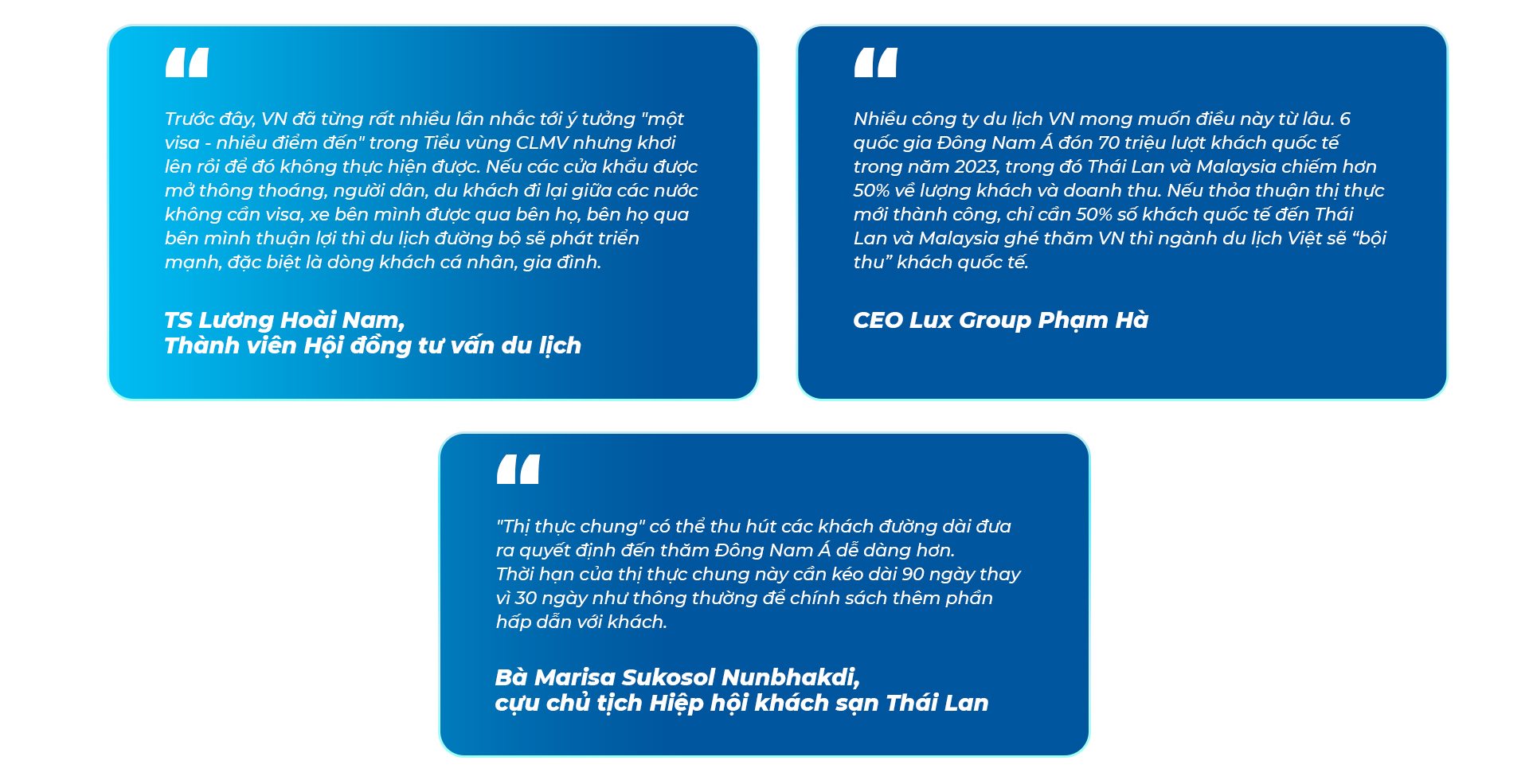
Source: https://thanhnien.vn/co-hoi-vang-cho-du-lich-viet-nam-185240413191232981.htm



![[Photo] Prime Minister Pham Minh Chinh receives leaders of Excelerate Energy Group](https://vphoto.vietnam.vn/thumb/1200x675/vietnam/resource/IMAGE/2025/5/29/c1fbe073230443d0a5aae0bc264d07fe)
![[Photo] Prime Minister Pham Minh Chinh attends the event "Digital transformation of the banking industry by 2025"](https://vphoto.vietnam.vn/thumb/1200x675/vietnam/resource/IMAGE/2025/5/29/0e34cc7261d74e26b7f87cadff763eae)

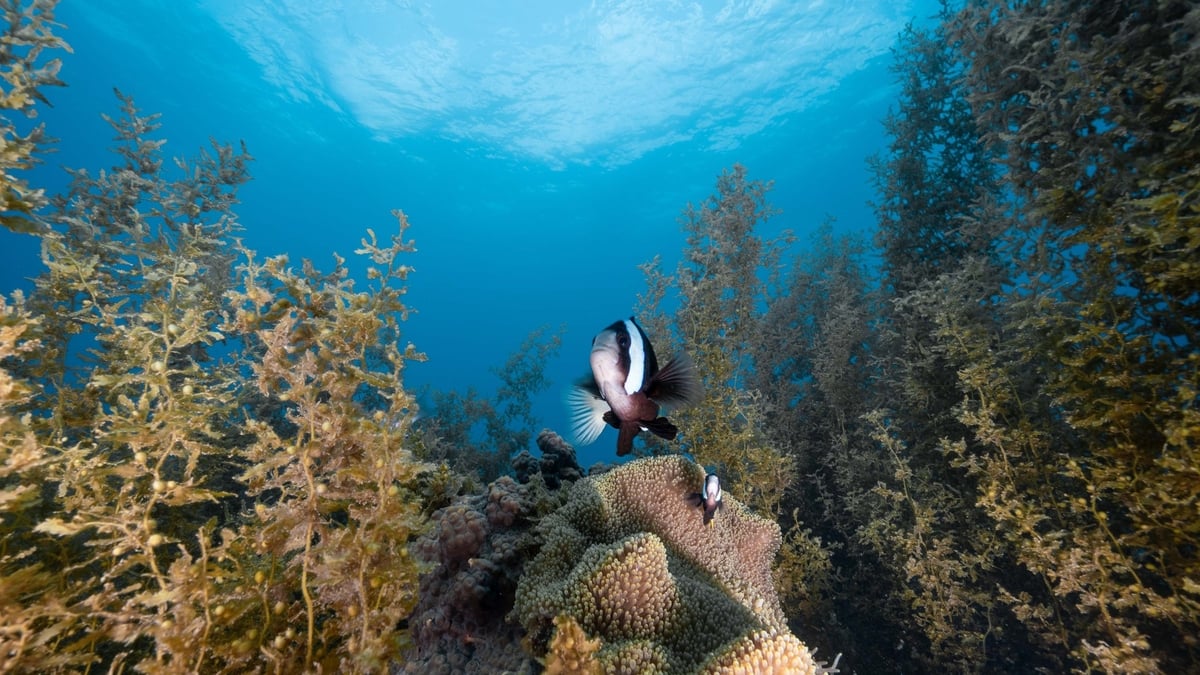

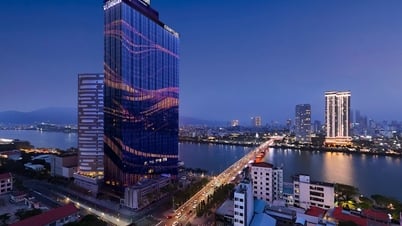



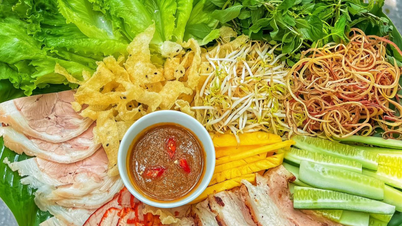
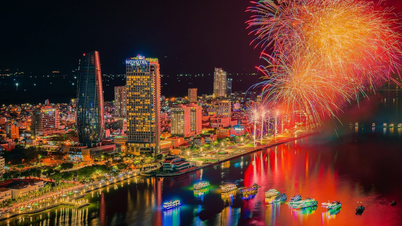






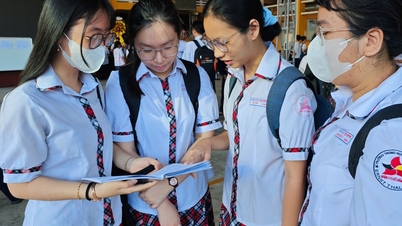
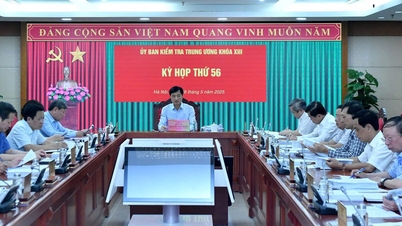
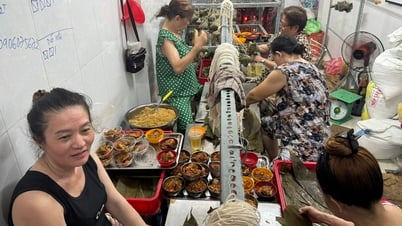

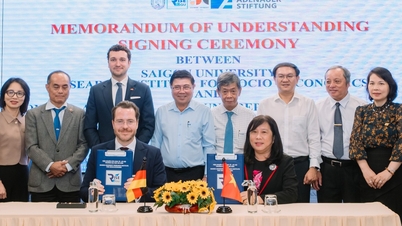
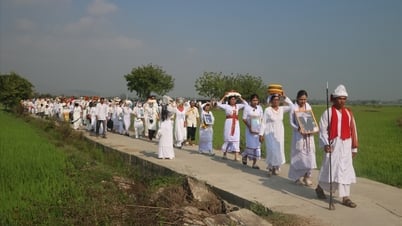





















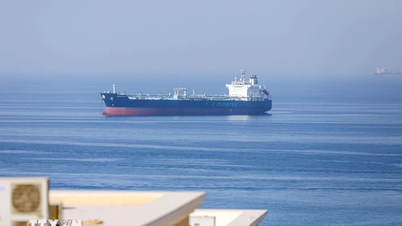




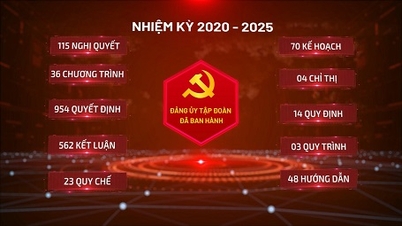


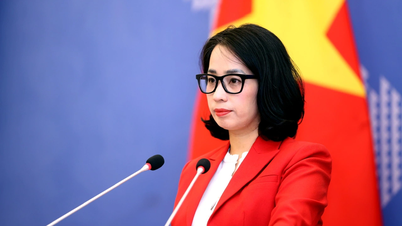






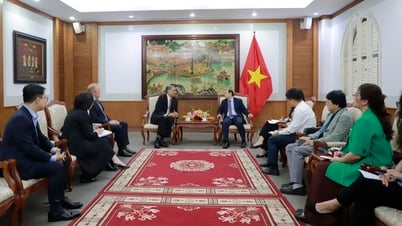


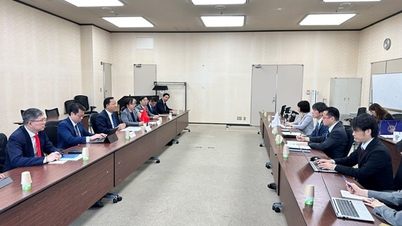

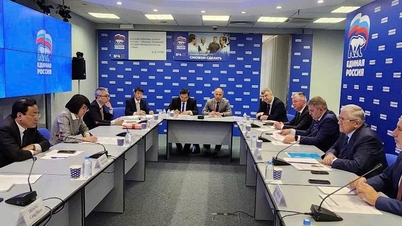

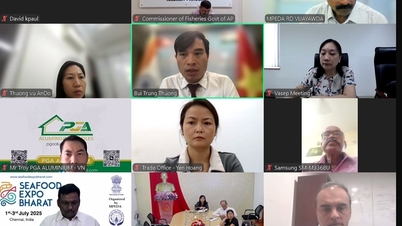
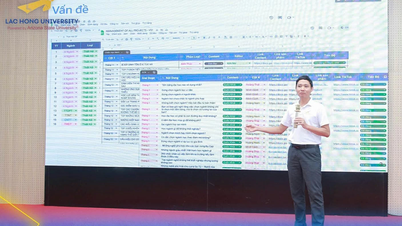










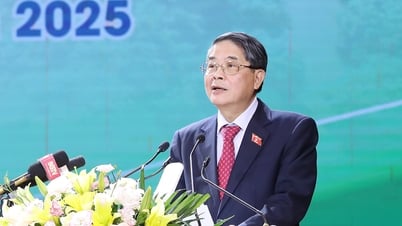







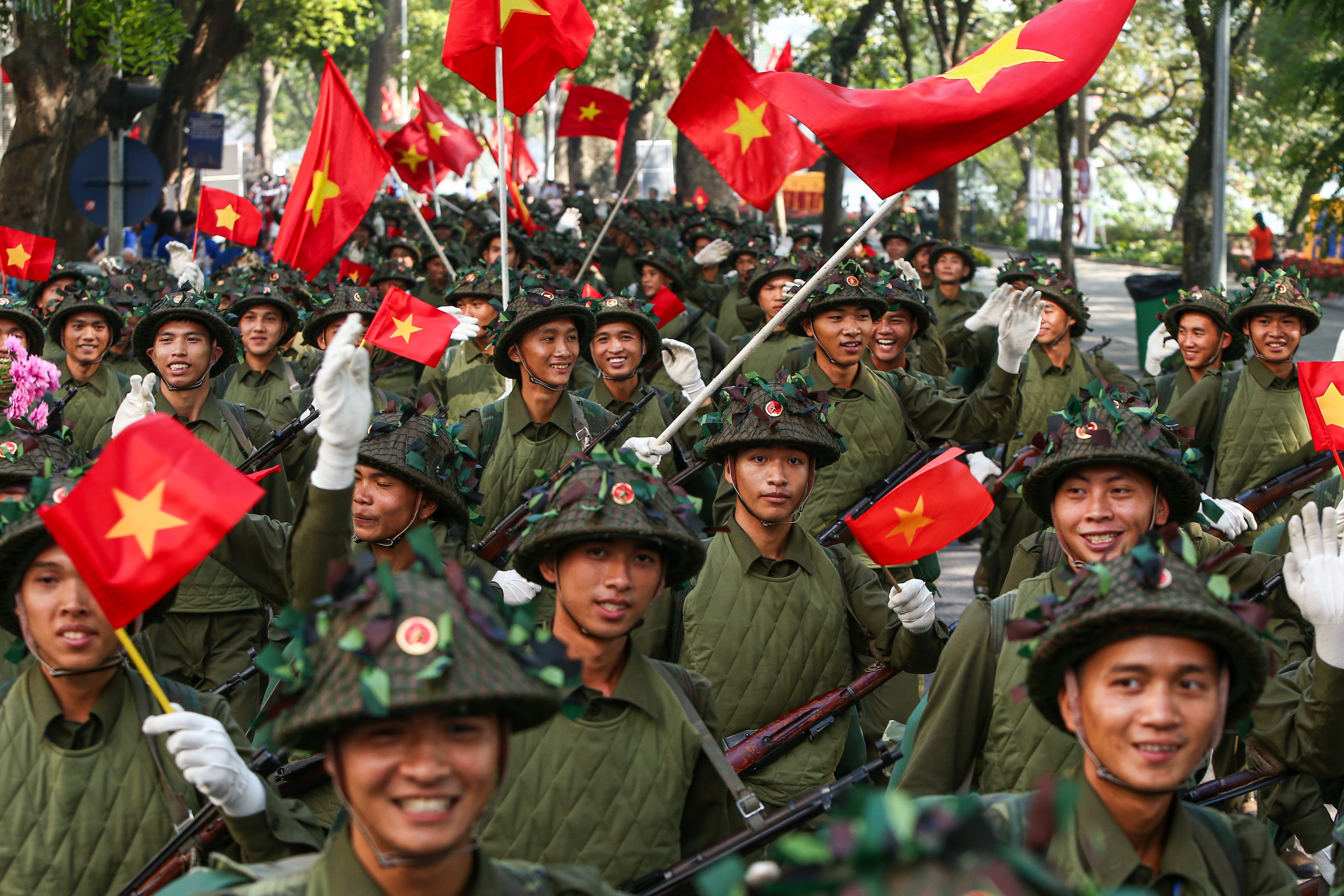
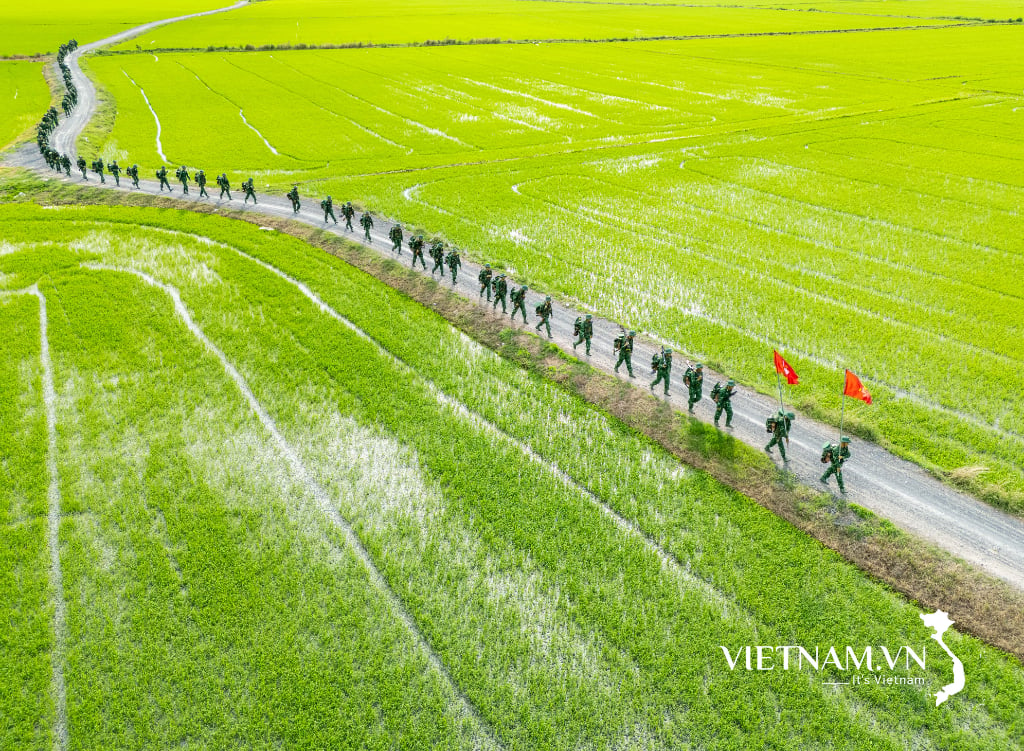
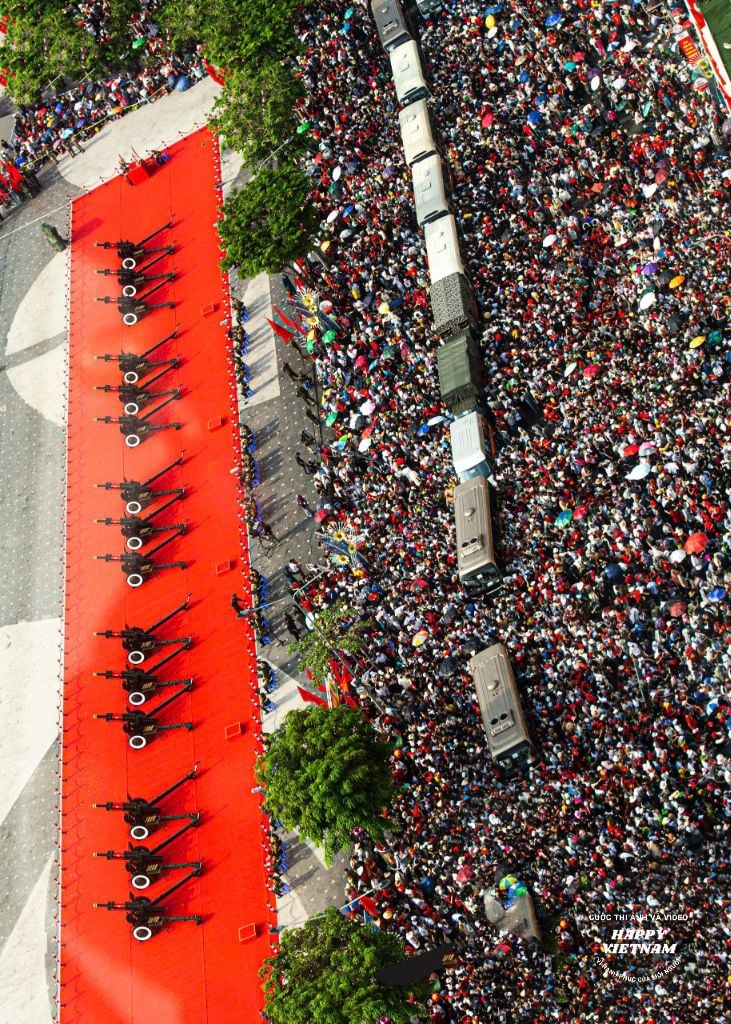

Comment (0)